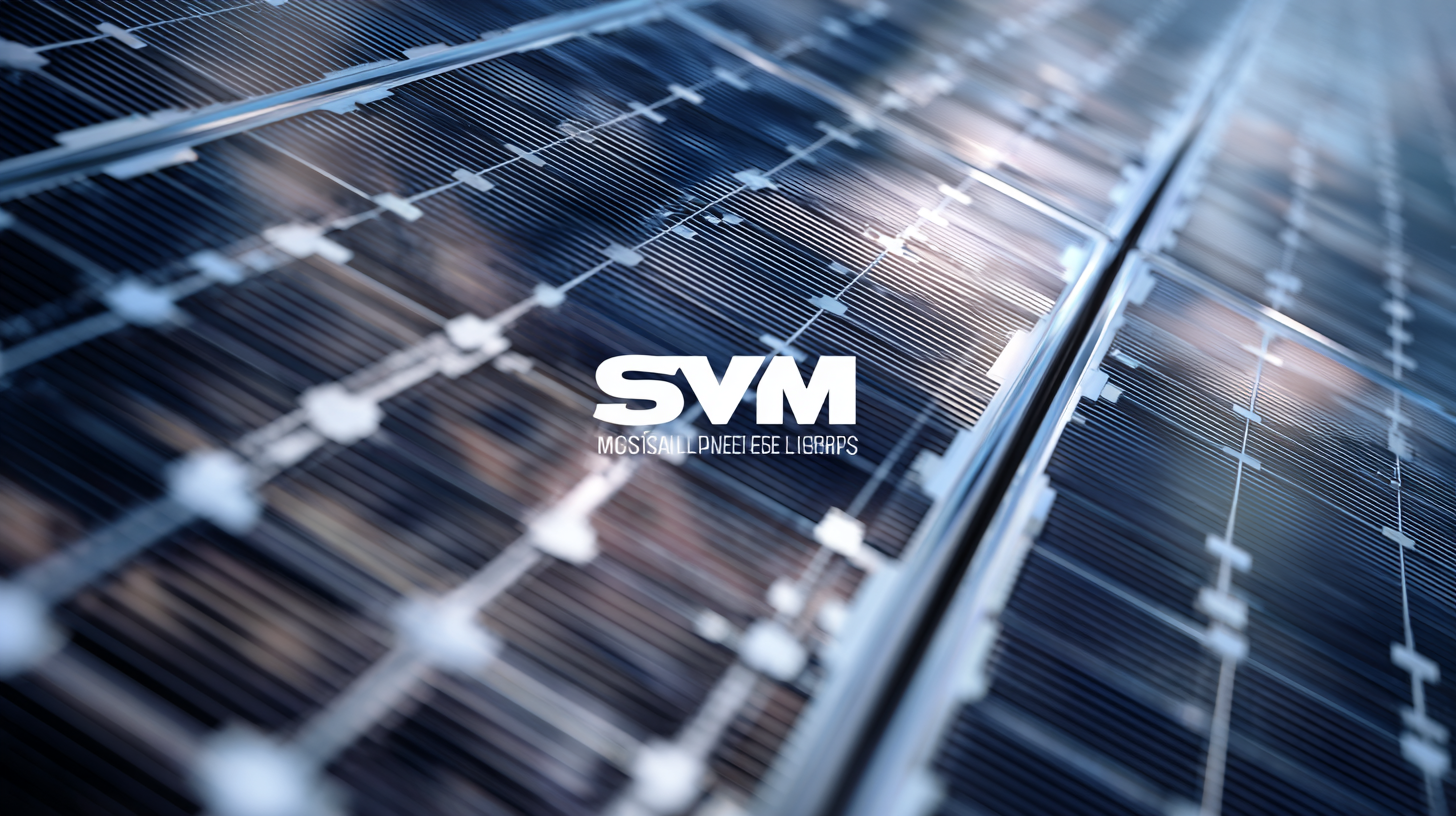In recent years, the solar energy industry has witnessed unprecedented growth, with Solar Modules becoming a cornerstone of sustainable energy solutions. According to the International Energy Agency (IEA), global solar capacity reached a record 1,000 GW in 2020, marking a crucial milestone in the transition toward renewable energy.

However, the selection of the right Solar Module is paramount, as it can significantly impact both performance and return on investment. Various types of Solar Modules, such as monocrystalline, polycrystalline, and thin-film, each have unique specifications and applications across diverse industries from residential to commercial and utility-scale implementations.
Nevertheless, choosing the appropriate Solar Module is not without its challenges; issues such as efficiency rates, degradation over time, and environmental impact require careful consideration. This blog aims to unveil the best specifications of Solar Modules and provide insights into choosing the right one that meets your specific needs and addresses potential issues within the industry.
When selecting the right solar module for your needs, understanding key specifications is crucial. Key terms such as efficiency, power output, and temperature coefficient all play important roles in determining a module's performance. According to the National Renewable Energy Laboratory (NREL), the average efficiency of commercial solar panels ranges from 15% to 22%. Higher efficiency means more energy production in a smaller area, which is particularly beneficial for residential installations with limited roof space.
Another critical metric is the temperature coefficient, which indicates how much power output decreases as the temperature rises. Most modules have a temperature coefficient around -0.3% to -0.5% per degree Celsius. For example, a module with a -0.4% temperature coefficient will experience a power loss of around 12% at 30 degrees Celsius above the standard test conditions. This information is essential for homeowners in hotter climates to evaluate potential performance losses and make informed decisions about their solar investments. Understanding these specifications enables consumers to select solar modules that best match their energy needs and site conditions.
When selecting the right solar modules for your needs, understanding the importance of import and export certifications is crucial. These certifications not only ensure that the solar panels meet industry standards but also guarantee their reliability and efficiency. Recent developments in the global solar market highlight the pivotal role these certifications play. For instance, as countries like India significantly increase their solar module exports, the necessity for certified manufacturers becomes apparent. The Ministry of New and Renewable Energy in India has updated its list of certified manufacturers, ensuring that only high-quality products enter the market, which in turn boosts consumer confidence.
Additionally, the current landscape shows the challenges faced by manufacturers amid government policies to promote local production. Reports indicate that the push for domestically manufactured modules has led to bottlenecks, potentially hindering capacity growth. Moreover, international trade dynamics are shifting, with countries like the United States scrutinizing imports to prevent circumvention of existing tariffs. Understanding the implications of these regulations and certifications will empower consumers and project developers to make informed decisions while navigating this evolving industry.
When considering solar modules for your home or business, the first step is to assess your solar needs. Start by evaluating your energy consumption patterns. Take a close look at your electricity bills to determine how much energy you use on average each month. This will provide a baseline that helps you understand the capacity of solar modules you require.
Tip: Use an energy calculator or consult with a solar professional to get an accurate estimate of your needs, accounting for future changes such as increased consumption or additional appliances.
Next, consider the available space for installation. The roof orientation, shading from trees or buildings, and the total area available will directly impact the type of solar module you should choose. For instance, if you have limited space, high-efficiency modules may be the right option, as they generate more power in a smaller area.
Tip: Ensure that your roof structure is in good condition and can support the weight of the solar panels. Consulting with a solar installer can help assess your roof's suitability for this installation.

When choosing a solar module, evaluating its efficiency and performance ratings is crucial. Solar module efficiency, defined as the ratio of sunlight converted into usable electricity, varies significantly among different types of panels. According to the National Renewable Energy Laboratory (NREL), monocrystalline solar panels typically offer the highest efficiencies, ranging from 15% to over 22%. Meanwhile, polycrystalline panels generally fall between 13% and 16%, making them a less efficient choice but often more budget-friendly.

Moreover, performance ratings provide insight into how modules operate under real-world conditions. Key metrics such as temperature coefficient, which indicates how a module's efficiency is affected by temperature changes, are essential for understanding a panel's long-term performance. For instance, a lower temperature coefficient (around -0.3%/°C) suggests better efficiency in warmer climates, as highlighted in the Solar Energy Industries Association (SEIA) reports. Furthermore, the degradation rate, typically around 0.5% to 1% per year for high-quality panels, plays a pivotal role in determining the longevity of your investment. By carefully analyzing these specifications, consumers can make informed decisions that align with their renewable energy goals.
When choosing the right solar module for your setup, several key factors should guide your decision. First and foremost, consider the efficiency of the solar panels. This metric indicates how well a module can convert sunlight into electricity. Higher efficiency panels may come with a steeper price tag, but they can generate more energy in limited spaces, making them an excellent choice for residential installations or smaller rooftops.
Another critical factor to consider is the solar panel's durability and warranty. Since solar modules are exposed to various weather conditions, it's essential to choose one that can withstand extreme temperatures, wind, and hail. Look for modules with a long warranty period, which typically ranges from 25 to 30 years. This factor not only speaks to the manufacturer's confidence in their product but also ensures a long-term investment in your energy savings. Additionally, take into account the panel's temperature coefficient, which impacts performance in high temperatures. Together, these considerations will help you evaluate which solar module best aligns with your energy needs and environmental conditions.
| Specification | Description | Recommendation |
|---|---|---|
| Efficiency | Percentage of sunlight converted into usable electricity | Choose modules with at least 18% efficiency for residential use |
| Power Output | Maximum power output under standard test conditions, measured in watts | Select panels with higher wattage for larger energy needs |
| Temperature Coefficient | Rate at which efficiency decreases as temperature increases | Opt for modules with a lower temperature coefficient |
| Warranty | Time period for which the manufacturer guarantees performance | Look for at least 25 years on performance and product warranty |
| Aesthetics | Visual appeal of the solar panel | Consider black or frameless designs for modern roofs |
| Certifications | Compliance with international standards for quality and safety | Ensure the panel has certifications like IEC 61215 and IEC 61730 |
